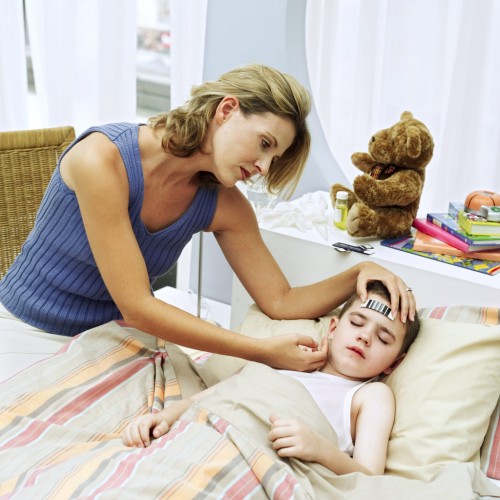5 Serious Symptoms in Children to Never Ignore
It didn’t used to be as difficult as it is now, but having enough knowledge for a parent to navigate through the medical system isn’t easy. Sometimes, it’s next to impossible and still keep your wits about you.
A parent must not only understand the office system of the doctor they have chosen; but, what about all those symptoms that they’ll ask you about if you call?
What if the symptoms aren’t important enough to call in the first place? What if they are? Which are serious symptoms of illness and which are not? Should I just go to the Emergency Room? All valid questions, BUT let’s not make it more difficult than it really is.
Most pediatricians are smart enough to realize that children’s illnesses often seem to develop or get worse at night and that after-hour calls are part of the life-style and profession they have chosen.
However, I’m sorry to say, there are a few who just don’t care anymore (just like in every other profession – my plumber comes to mind) and think that a message on their answering machine telling you to “call the emergency room” is perfectly acceptable. It isn’t! I don’t accept it, and neither should you.
Don’t Ignore These Sympytoms
However, lets assume that you’ve found a doctor you can trust to care (or soon will), and discuss the other side of the coin: the symptom side of the equation. What are some of the symptoms found in a child which parents shouldn’t ignore? As in everything else in life, one should take a logical approach.
“Really Sick!”
Let’s get the “disclaimers” out of the way first, shall we.
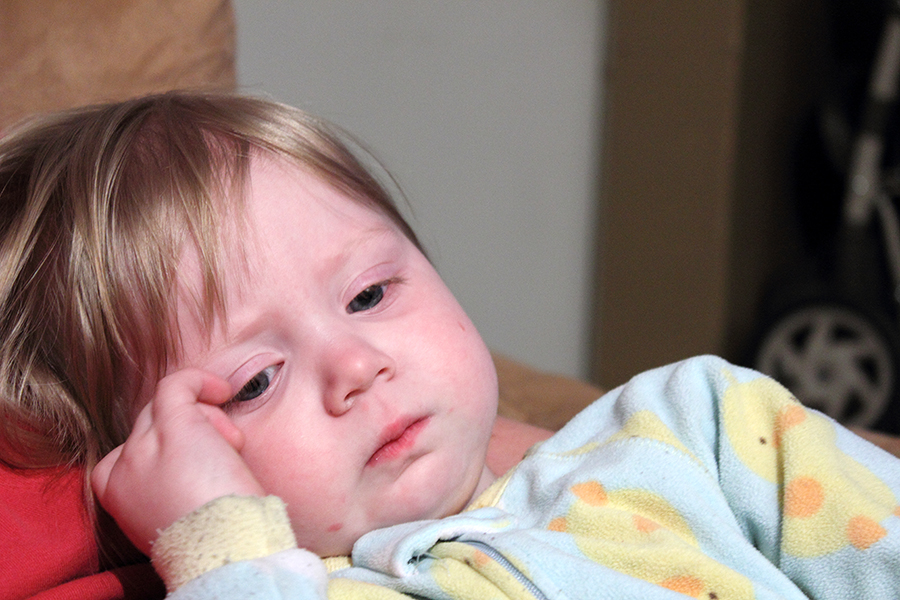 If your boy is “sicker or as sick as he’s ever been” that’s the time to at least call his doctor. If your girl looks weak and “really sick” (gut feeling) and you can’t get hold of her doctor in a reasonable time – at least “call” the Urgent or Emergency center. (With the full understanding that if the “telephone-answerer” who answers won’t let you talk to a nurse or doctor, their “cookbook response” is to tell you to come and see them.)
If your boy is “sicker or as sick as he’s ever been” that’s the time to at least call his doctor. If your girl looks weak and “really sick” (gut feeling) and you can’t get hold of her doctor in a reasonable time – at least “call” the Urgent or Emergency center. (With the full understanding that if the “telephone-answerer” who answers won’t let you talk to a nurse or doctor, their “cookbook response” is to tell you to come and see them.)
If the child is “really sick,” again a gut reaction, you’ve got little else to do but go to the Urgent (preferable) or Emergent Center and you shouldn’t feel guilty about it. There truly is something to “mother’s intuition.” Here’s hoping that you’re not in this bind, or not at least more than once, and have a knowledgeable doctor or nurse to confer with.
I’ve recently heard of an after hours calls outfit in Colorado who takes calls for over 900 “doctors” each night. I don’t know them well enough to make any recommendation but some of their statistics might be of use. Of each nights calls, 20% are sent to the ER, 30% need to be seen the next day in the office, and half can be safely cared for at home.
It’s a Baby
Another disclaimer, sort of, is that we’re talking about toddlers and children here in this article – infants have their own rules, which are more strict, and we’ve addressed them before. The younger the child is the more a parent should err on the side of caution.
As for children of any age, if you are in doubt about something don’t hesitate to ask a health care professional.
High Fever in a Child Over One
A new parent’s first instinct may be to call the doctor immediately when they notice that their child is flushed and hot. The logical approach is to first take a temperature; but, other things are just as important to consider.
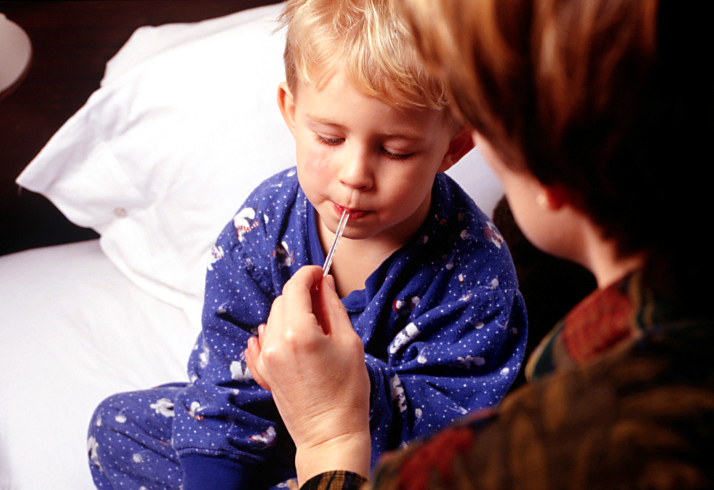 It’s often more important to know what the child’s other serious symptoms are and what he/she “looks like.”
It’s often more important to know what the child’s other serious symptoms are and what he/she “looks like.”
If a child has a fever it usually means that their immune system is working and they are fighting off an infection of some sort – bacteria or virus.
A fever is part of the body’s way of defending itself against an infection. If a child has a fever, it means that his immune system is working. A fever, by definition, is 100.4 F, taken rectally. You may want to take a toddler’s temperature under his arm, but be sure to add one degree to it, to get a more accurate number.
You can give your child medicine such as acetaminophen or ibuprofen (if the child is more than 6 months old) to reduce his fever. But be sure that it’s truly necessary, and keep close tabs on the dosage of this or any medication in children, whether it’s from a prescription or not. Remember, fever reducers don’t fight the infection that’s causing the fever.
A recent study published in the journal Pediatrics found that one in four parents give their children fever-reducing medication when their temperature is less than 100 F, but most pediatricians don’t recommend treating a fever unless it’s above 101 F. And if your child looks well and is eating and drinking, skip the trip to the ER; a high fever by itself doesn’t always need urgent care.
Most fevers in a child are not medical emergencies and can wait until the office opens to see a doctor. Most pediatricians recommend that you bring your child age 2 or older to the doctor if he has a fever of 104 degrees Fahrenheit or higher, if he looks unwell, or if he has had a persistent fever for four or more days in a row. A child younger than 2 should be seen by a doctor within 48 hours of a fever.
Bad Headache
What’s a parent to do when their boy claims “I’ve got a bad headache” right before going to school. For that matter, what’s an author to do trying to explain “how bad is bad?”
 Do we let them skip school and sleep it off on the one hand; or, do we take a day off from work and try to get them in to see the doctor? How can you tell?
Do we let them skip school and sleep it off on the one hand; or, do we take a day off from work and try to get them in to see the doctor? How can you tell?
Well, temporary and minor headaches usually go away with OTC (over the counter) pain relievers like aspirin and acetaminophen – major headaches do not. Major headaches interfere with ADLs (activities of daily living like eating, playing and TV), minor headaches do not. Minor headaches usually come and go and are transient, major ones stick around for awhile.
If all a child can do is think about the pain and can’t eat, sleep or play, that’s for sure the time to call your pediatrician.
Headaches are most often caused by tight or ‘tense’ muscles in the scalp (a ‘tension’ headache) and not so much problems related to the brain. So, headaches with other neurological symptoms (like blurred vision, trouble walking or confusion) deserve a ride to the emergency room.
In fact, a headache combined with other general symptoms like fever, vomiting, confusion or stiff neck, more often than not means trouble and should be at least discussed with your doctor within the hour. There could be a more serious problem, like meningitis, which needs to be actually evaluated as soon as possible.
This is one of the times where a parent needs to be very clear in communicating through the doctors ‘telephone system.’ Usually doctors don’t like parents to begin with a diagnosis themselves; but, if that’s what it takes to get through a receptionist or answering machine, it’s OK to say: “I think Johnny has meningitis, please let me talk to the doctor.” You’ll either obtain the help you need or find out you need to call/see someone else in a timely manner.
As a related thought, if a child gets headaches often, that in itself needs to be evaluated. Children generally should not get headaches.
‘Bad’ Rash
Just like a ‘bad’ headache, a ‘bad’ rash is tough to describe completely. Let’s begin this way, talking about whether or not you should call/see a doctor at some time during this illness.
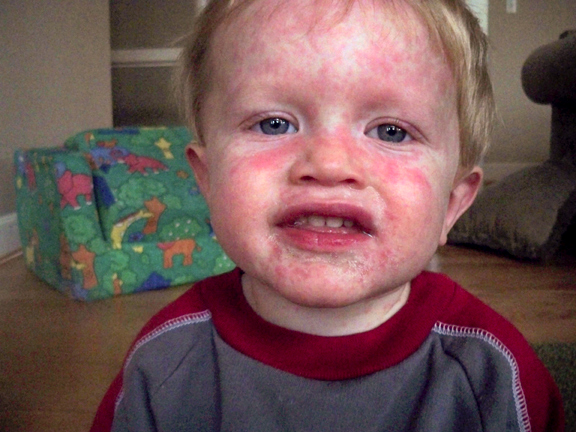 first, look at your child’s rash very carefully and if you can’t be 100% sure that you’ve seen this exact kind of rash before then you at least need to have a conversation if not an actual visit with the pediatrician within 24-48 hours.
first, look at your child’s rash very carefully and if you can’t be 100% sure that you’ve seen this exact kind of rash before then you at least need to have a conversation if not an actual visit with the pediatrician within 24-48 hours.
Second, if it’s a rash that makes you go: “ewwwhh,” or your husband go: “what the crap is that?”; then, you need to call or see the doctor for that as well.
But, there are rashes that are quite a bit more emergent than that; so, lets talk now about some signs that you should see a doctor quickly.
Begin by looking at your child’s over-all status. Do they look, well, “sick” in addition to having the rash. Is there swelling around parts of the body that are very important (like eyes, mouth, tongue, genitals) or is there difficulty breathing or swallowing? If so: see the doctor as soon as the conditions warrant – including the ER. If not: take a breath and look more closely at the rash to see if it fits another ’emergent’ criteria.
Hives with lip swelling need immediate treatment with diphenyhadramine (Benadryl) and must be examined by a doctor. If there is any question about breathing: call 911, the symptoms suggest anaphylactic reaction, which is a serious, life-threatening allergic reaction.
Rashes on a child’s arm or legs, or even on the trunk, are generally not life-threatening; but, should be examined more closely. If it blanches (looses color) with pressure then comes back when pressure is released you usually can wait for the doctor to return your call. Most of the virus and allergic rashes will blanch, even hives.
On the other hand, if you put pressure on it and it doesn’t change color when you press on it – that can indicate a medical emergency (like meningitis or sepsis), especially (but not always) when accompanied by a fever. You may need to find something clear that you can see through, like plastic or glass, in order to press on the lesion and see that it doesn’t change.
Such a non-blanching rash can be a ‘petechiae’ – a small broken capillary with a tiny amount of blood under the skin – looking almost like a tiny splinter. Even though a few other things can cause petechiae to appear in the skin, like severe coughing or vomiting, they can indicate meningitis or sepsis so a parent NEVER, EVER wants to ignore it and should see a physician immediately – doubly so if the child also has a fever.
Severe Stomach Bug
I kind of chuckled when I wrote this one down on the list. “Symptoms parents shouldn’t ignore?” – a parent couldn’t ignore this one even if they tried!
[And, notice that I said a “stomach-bug” and NOT the “stomach-flu,” because gastroenteritis has NOTHING to do with the “influenza”]
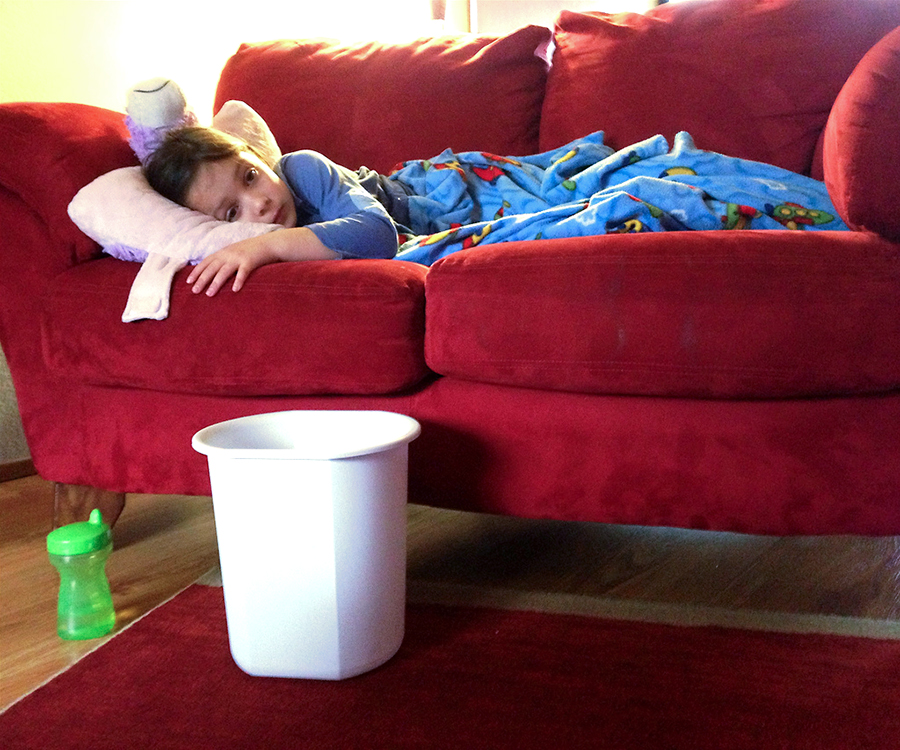 It’s most often not the “bug” which causes an emergency situation in an ill child, it’s the results of what all that loss of body fluids does to them. It’s called dehydration.
It’s most often not the “bug” which causes an emergency situation in an ill child, it’s the results of what all that loss of body fluids does to them. It’s called dehydration.
A child who eats some ‘bad food’ or contracts gastroenteritis should be treated preventively with electrolyte solution (pedialyte or Lytren) and monitored for how often they’re throwing up, having diarrhea and urinating.
Urine frequency and amounts drop in dehydration. Urine becomes concentrated (darker) and mucous membranes get tacky and dry. Mild dehydration can be treated at home, though treatment depends in part on the child’s age. If the child seems like he is getting worse, you should see your doctor.
An eight-year-old vomiting three times in an afternoon may not lead to dehydration, but eight bouts of diarrhea in eight hours probably will – as will a combination of vomiting with diarrhea. Younger and smaller children are affected worse than older and larger ones because they have less fluid to loose in the first place.
Loosing fluid from “below” and not being able to replace it from the “top” can lead to an emergency room visit. This is one of those times where it’s better to “touch bases” with your pediatricians office nurse earlier in the disease so everyone will know what to expect and do should the situation take a turn for the worse later on.
Stiff Neck
 This is another one of those symptoms that can be too bad to ignore but is really difficult to teach about because much of the time it’s not serious and, really, how bad is bad and how stiff is stiff?
This is another one of those symptoms that can be too bad to ignore but is really difficult to teach about because much of the time it’s not serious and, really, how bad is bad and how stiff is stiff?
If your boy awakens unable to turn his head without pain and is NOT feverish – it’s probably because he slept “wrong” or “strained” it yesterday when he was playing.
If, on the other hand, he’s got the exact same symptoms with a fever – that’s a whole different story! That could be meningitis (or not) and could be life-threatening. A strep throat can cause a stiff neck and fever (or not) but so can other bacteria known to infect the nervous system.
A stiff neck with a fever needs to be examined by a doctor, today; even if it turns out to be normal. That’s what I’d do. And that’s how I treated my patients.
You really need to look at the whole child and the constellation of symptoms, not just one symptom in isolation. A stiff neck alone may mean a strain. Combined with a fever, light sensitivity and headache – I wouldn’t be so sure.
A physician has been trained to do other, difficult to describe and explain, physical examination procedures in order to differentiate muscle tenderness from neurologically related tenderness – that’s what you should avail yourself of.
Even if the neck pain has been clearly caused by an injury, that may well need to be seen by a doctor too – it depends on the constellation of symptoms… and how ‘bad’ it is.
5 Posts in Physical Exam (physicalExam) Series
- Link to article: Physical Exam, Fading Art – 21 Feb 2016
- Poor Physical Exam - Patients Loose – 17 Feb 2016
- Five serious symptoms never to ignore – 21 Dec 2013
- Diagnosing Heart Murmurs in Children – 12 Dec 2013
- Pediatric Physical Exam – 4 Jan 2012
Advertisement by Google
(sorry, only few pages have ads)

